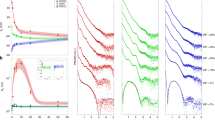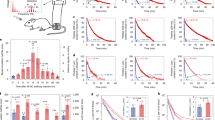Abstract
Immediately upon contact with blood, nanosized drug delivery systems become coated with a so-called protein corona. The quantitative and qualitative composition of the corona defines not only the behavior of the nanocarrier in the circulation but, ultimately, the pharmacokinetics and biodistribution of the encapsulated drug as well. In turn, the composition of the protein corona depends on the surface properties of the nanoparticles, such as size and distribution of charge and functional groups on the particle surface. Liposomes belong to the most bio- and hemocompatible drug delivery systems feasible for intravenous route of administration required in chemotherapy of metastasizing tumors. However, knowledge on the interactions of liposomes of various compositions with blood plasma proteins remains fragmentary. Moreover, all nanosized drug delivery systems are potential targets for the innate immunity system, primarily the complement (C) system, which underlies frequent cases of hypersensitivity reactions. Recently, in a panel of in vitro hemocompatibility tests, we demonstrated that liposomes built of natural phospholipids — egg phosphatidylcholine and phosphatidylinositol from Saccharomyces cerevisiae — and loaded with diglyceride conjugates of anticancer drugs melphalan and methotrexate, did not affect the morphology and numbers of the main blood cell types. While preparations with melphalan prodrug were also inert in coagulation and C activation tests, methotrexate-loaded liposomes caused impaired coagulation and C activation. The aim of this work was to study the interactions of liposomes carrying prodrugs of melphalan and methotrexate with blood plasma proteins in vitro. Data on protein binding capacity of liposomes obtained with classical gel permeation chromatography techniques allowed for prediction of rather rapid elimination of the liposomes from circulation. A number of differences revealed through immunoblotting of the liposome-bound proteins agree with the previously obtained data on C activation. The possible mechanism of C activation by methotrexate-containing liposomes is discussed.
Similar content being viewed by others
Abbreviations
- C:
-
complement
- Mlph-DOG:
-
diglyceride conjugate of melphalan
- Mlph-L:
-
liposomes loaded with Mlph-DOG
- MTX-DOG:
-
diglyceride conjugate of methotrexate
- MTX-L:
-
liposomes loaded with MTX-DOG
- PB :
-
protein binding
- PBS:
-
phosphate buffered saline
- PC:
-
phosphatidylcholine
- PI:
-
phosphatidylinositol
References
Monopoli, M. P., Aberg, C., Salvati, A., and Dawson, K. A. (2012) Biomolecular coronas provide the biological identity of nanosized materials, Nat. Nanotech., 7, 779–786.
Walkey, C. D., and Chan, W. C. W. (2012) Understanding and controlling the interaction of nanomaterials with proteins in a physiological environment, Chem. Soc. Rev., 41, 2780–2799.
Aggarwal, P., Hall, J. B., McLeland, C. B., Dobrovolskaia, M. A., and McNeil, S. E. (2009) Nanoparticle interaction with plasma proteins as it relates to particle biodistribution, biocompatibility and therapeutic efficacy, Adv. Drug Deliv. Rev., 61, 428–437.
Semple, S. C., Chonn, A., and Cullis, P. R. (1998) Interactions of liposomes and lipid-based carrier systems with blood proteins: relation to clearance behavior in vivo, Adv. Drug Deliv. Rev., 32, 3–17.
Dobrovolskaia, M. A., Neun, B. W., Man, S., Ye, X., Hansen, M., Patri, A. K., Crist, R. M., and McNeil, S. E. (2014) Protein corona composition does not accurately predict hematocompatibility of colloidal gold nanoparticles, Nanomedicine, doi: 10.1016/j.nano.2014.01.009.
Chonn, A., Semple, S. C., and Cullis, P. R. (1992) Association of blood proteins with large unilamellar liposomes in vivo. Relation to circulation lifetimes, J. Biol. Chem., 267, 18759–18765.
Szebeni, J. (2012) Hemocompatibility testing for nanomedicines and biologicals: predictive assays for complement mediated infusion reactions, Eur. J. Nanomed., 4, 33–53.
Szebeni, J., Muggia, F., Gabizon, G., and Barenholz, Y. (2011) Activation of complement by therapeutic liposomes and other lipid excipient-based therapeutic products: prediction and prevention, Adv. Drug Deliv. Rev., 63, 1020–1030.
Szebeni, J., Muggia, F. M., and Alving, C. R. (1998) Complement activation by Cremophor EL as a possible contributor to hypersensitivity to paclitaxel: an in vitro study, J. Natl. Cancer Inst., 90, 300–306.
Kuznetsova, N., Kandyba, A., Vostrov, I., Kadykov, V., Gaenko, G., Molotkovsky, J., and Vodovozova, E. (2009) Liposomes loaded with lipophilic prodrugs of methotrexate and melphalan as convenient drug delivery vehicles, J. Drug Deliv. Sci. Technol., 19, 51–59.
Vodovozova, E. L., Moiseeva, E. V., Grechko, G. K., Gayenko, G. P., Nifant’ev, N. E., Bovin, N. V., and Molotkovsky, J. G. (2000) Antitumor activity of cytotoxic liposomes equipped with selectin ligand SiaLeX, in a mouse mammary adenocarcinoma model, Eur. J. Cancer, 36, 942–949.
Kozlov, A. M., Korchagina, E. Yu., Vodovozova, E. L., Bovin, N. V., Molotkovskii, Yu. G., and Syrkin, A. B. (1997) Increase in sarcolysin antitumor activity by transforming it into a lipid derivative and incorporation into the membrane of liposomes containing a carbohydrate vector, Byul. Eksp. Biol. Med., 123, 381–383.
Kuznetsova, N. R., Sevrin, C., Lespineux, D., Bovin, N. V., Vodovozova, E. L., Meszaros, T., Szebeni, J., and Grandfils, C. (2012) Hemocompatibility of liposomes loaded with lipophilic prodrugs of methotrexate and melphalan in the lipid bilayer, J. Control Rel., 160, 394–400.
Heiss, H. W. (1983) in Human Physiology (Schmidt, R. F., and Thews, G., eds.) Springer-Verlag, Berlin-Heidelberg-New York, pp. A43–A44.
Vodovozova, E. L., Nikol’skii, P. Yu., Mikhalev, I. I., and Molotkovskii, Yu. G. (1996) Lipid derivatives of sarcolysin, methotrexate, and rubomycin, Russ. J. Bioorg. Chem., 22, 468–475.
Vodovozova, E. L., Gaenko, G. P., Bobrikova, E. S., Pazynina, G. V., and Molotkovskii, Yu. G. (2007) A diglyceride derivative of methotrexate: synthesis and cytotoxic activity in targeted delivery liposomes, Pharm. Chem. J., 41, 297–301.
Markwell, M., Haas, S., and Bieber, L. (1978) A modification of the Lowry procedure to simplify protein determination in membrane and lipoprotein samples, Anal. Biochem., 210, 206–210.
Dos Santos, N., Allen, C., Doppen, A.-M., Anantha, M., Cox, K., Gallagher, R. C., Karlsson, G., Edwards, K., Kenner, G., Samuels, L., Webb, M. S., and Bally, M. B. (2007) Influence of poly(ethylene glycol) grafting density and polymer length on liposomes: relating plasma circulation lifetimes to protein binding, Biochim. Biophys. Acta, 1768, 1367–1377.
Laemmli, U. (1970) Cleavage of structural proteins during the assembly of the head of bacteriophage T4, Nature, 227, 680–685.
Shevchenko, A., Wilm, M., Vorm, O., and Mann, M. (1996) Mass spectrometric sequencing of proteins silverstained polyacrylamide gels, Anal. Chem., 68, 850–858.
Gabizon, A., and Papahadjopoulos, D. (1988) Liposome formulations with prolonged circulation time in blood and enhanced uptake by tumors, Proc. Natl. Acad. Sci. USA, 85, 6949–6953.
Peng, A., Straubinger, R. M., and Balu-Iyer, S. V. (2010) Phosphatidylinositol containing lipidic particles reduces immunogenicity and catabolism of factor VIII in hemophilia a mice, AAPS J., 12, 473–481.
Moghimi, S. M., Andersen, A. J., Hashemi, S. H., Lettiero, B., Ahmadvand, D., Hunter, A. C., Andresen, T. L., Hamad, I., and Szebeni, J. (2010) Complement activation cascade triggered by PEG-PL engineered nanomedicines and carbon nanotubes: the challenges ahead, J. Control Rel., 146, 175–181.
Cedervall, T., Lynch, I., Lindman, S., Berggard, T., Thulin, E., Nilsson, H., Dawson, K. A., and Linse, S. (2007) Understanding the nanoparticle-protein corona using methods to quantify exchange rates and affinities of proteins for nanoparticles, Proc. Natl. Acad. Sci. USA, 104, 2050–2055.
Vroman, L., Adams, A., Fischer, G., and Munoz, P. (1980) Interaction of high molecular weight kininogen, factor XII, and fibrinogen in plasma at interfaces, Blood, 55, 156–159.
Goppert, T. M., and Muller, R. H. (2005) Adsorption kinetics of plasma proteins on solid lipid nanoparticles for drug targeting, Int. J. Pharm., 302, 172–186.
Sahu, A., and Lambris, J. D. (2001) Structure and biology of complement protein C3, a connecting link between innate and acquired immunity, Immunol. Rev., 180, 35–48.
Soames, C. J., and Sim, R. B. (1997) Interactions between human complement components factor H, factor I and C3b, Biochem. J., 326, 553–561.
Jozsi, M., Manuelian, T., Heinen, S., Oppermann, M., and Zipfel, P. F. (2004) Attachment of the soluble complement regulator factor H to cell and tissue surfaces: relevance for pathology, Histol. Histopathol., 19, 251–258.
Rodriguez de Cordoba, S., Esparza-Gordillo, J., Goicoechea de Jorge, E., Lopez-Trascasa, M., and Sanchez-Corral, P. (2004) The human complement factor H: functional roles, genetic variations and disease associations, Mol. Immunol., 41, 355–367.
Price, M. E., Cornelius, R. M., and Brash, J. L. (2001) Protein adsorption to polyethylene glycol modified liposomes from fibrinogen solution and from plasma, Biochim. Biophys. Acta, 1512, 191–205.
Aramaki, Y., Akiyama, K., Hara, T., and Tsuchiya, S. (1995) Recognition of charged liposomes by rat peritoneal and splenic macrophages: effects of fibronectin on the uptake of charged liposomes, Eur. J. Pharm. Sci., 3, 63–70.
Rodrigueza, W. V., Phillips, M. C., and Williams, K. J. (1998) Structural and metabolic consequences of liposome-lipoprotein interactions, Adv. Drug Deliv. Rev., 32, 31–43.
Saito, Y. M., Handa, T., and Miyajima, K. (1997) Effect of cholesterol on apolipoprotein A-I binding to lipid bilayers and emulsions, J. Lipid Res., 38, 287–294.
Pham, C. T. N., Mitchell, L. M., Huang, J. L., Lubniewski, C. M., Schall, O. F., Killgore, J. K., Pan, D., Wickline, S. A., Lanza, G. M., and Hourcade, D. E. (2011) Variable antibody-dependent activation of complement by functionalized phospholipid nanoparticle surfaces, J. Biol. Chem., 286, 123–130.
Janssen, B. J. C., Christodoulidou, A., McCarthy, A., Lambris, J. D., and Gros, P. (2006) Structure of C3b reveals conformational changes that underlie complement activity, Nature, 444, 213–216.
Moghimi, S. M., Andersen, A. J., Ahmadvand, D., Wibroe, P. P., Andresen, T. L., and Hunter, C. (2011) Material properties in complement activation, Adv. Drug Deliv. Rev., 63, 1000–1007.
Devine, D. V., and Marjan, J. M. (1997) The role of immunoproteins in the survival of liposomes in the circulation, Crit. Rev. Ther. Drug Carrier Syst., 14, 105–131.
Devine, D. V., Wong, K., Serrano, K., Chonn, A., and Cullis, P. R. (1994) Liposome-complement interactions in rat serum: implications for liposome survival studies, Biochim. Biophys. Acta, 1191, 43–51.
Author information
Authors and Affiliations
Corresponding author
Additional information
Published in Russian in Biokhimiya, 2014, Vol. 79, No. 8, pp. 999–1008.
Originally published in Biochemistry (Moscow) On-Line Papers in Press, as Manuscript BM14-078, June 22, 2014.
Rights and permissions
About this article
Cite this article
Kuznetsova, N.R., Vodovozova, E.L. Differential binding of plasma proteins by liposomes loaded with lipophilic prodrugs of methotrexate and melphalan in the bilayer. Biochemistry Moscow 79, 797–804 (2014). https://doi.org/10.1134/S0006297914080070
Received:
Revised:
Published:
Issue Date:
DOI: https://doi.org/10.1134/S0006297914080070




